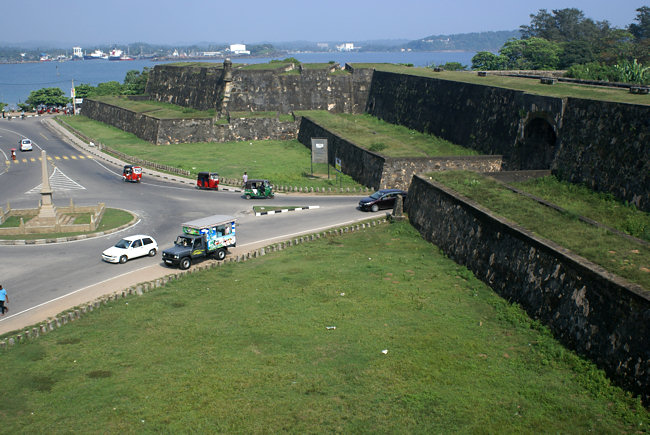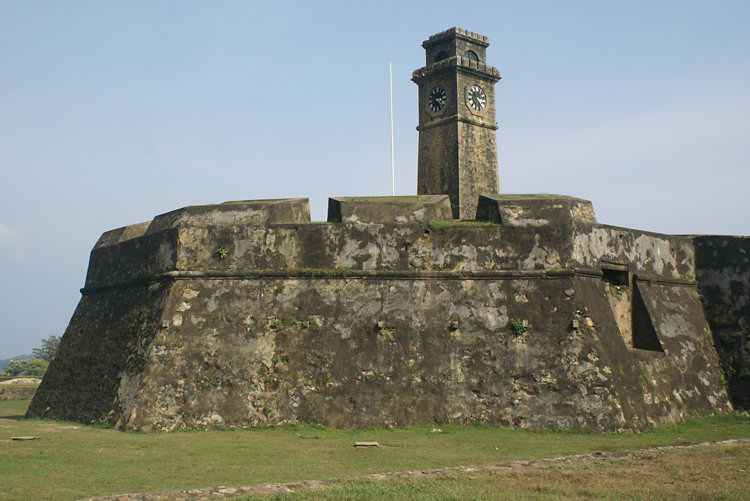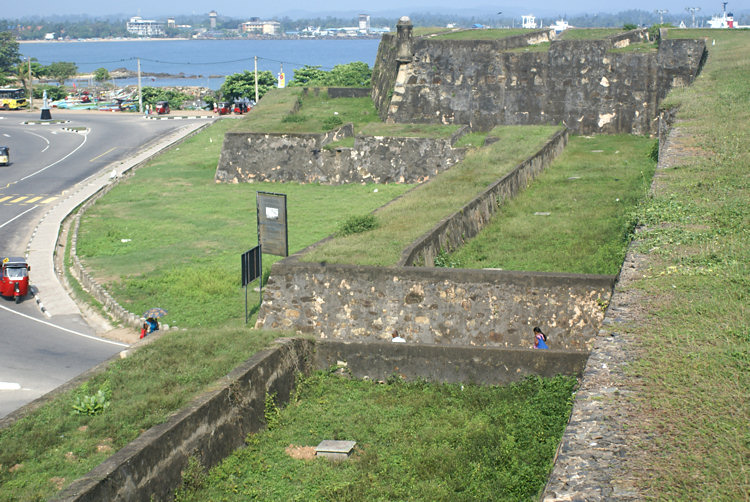Galle's British Gate & Star Sun Moon Bastions
In Sri Lanka you can walk on the walls of Galle's northern fortifications. You can explore the British Gate and Star, Sun and Moon Bastions

The British Gate on the northern wall of Galle Fort with the Sun Bastion in the distance
The Portuguese and then the Dutch built a fort in Galle in southern Sri Lanka, to protect the harbour. When Holland fell to France's Napoleonic armies and became one of its allies the British Royal Navy started to capture Dutch possessions overseas.
Galle was on the list. In 1815 at the congress of Vienna Britain was confirmed as the legitimate owner of Sri Lanka after its victory over Napoleon. The British started massive strengthening of Galle's fortress walls to make them able to withstand bombardment from modern artillery.
The picture below shows the Northern fortress walls. As you can see the walls are low but incredible thick. They have been angled in a star shape so that each wall's defenders could provide covering fire to the other walls. There was an all round arch of fire.

The central northern bastion of Galle Fort in Sri Lanka is called the Moon Bastion. It has a clock tower
The entrance way through the thick fortification walls that you can see the vehicles driving through is called the British Gate. In front of it on the small roundabout is the War Memorial. Fortresses of this period no longer had fighting towers in the corners. They had structures built in the shape of an arrow head. The one you can see in the above photograph is called the Sun Bastion. To take this photograph I am standing on the central northern bastion called the Moon Bastion. It has a clock tower, The Star Bastion is behind me in the North West corner of the fort by the sea wall.
Visitors are allowed to walk along the walls and young children can pretend to play at soldiers. On the top of each rampart there was a sunken area on the top where the defending soldiers could fire their rifles at the enemy. The large V shaped cuts into the rampart top were where large artillery cannons were placed. They would have been loaded with 'grape shot'. A canvases bag full of golf ball sized metal balls. When fired they acted like a huge shot gun that would have a devastating effect on any attacking infantry.

Sri Lanka's Galle Fort protective walls
Travel books

